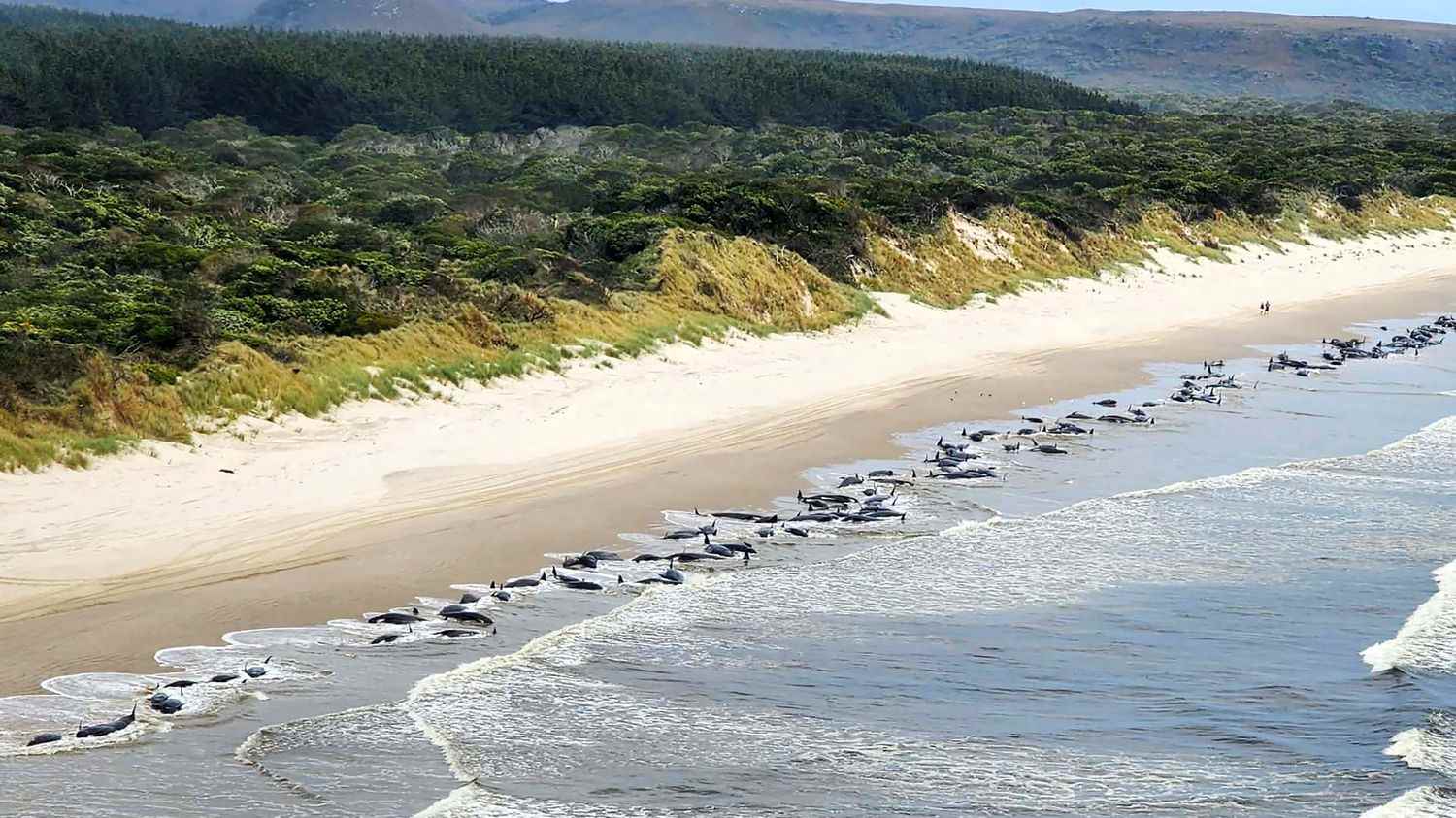The Australian television images are staggering: the animals are either stranded, lifeless, on the beach, or struggling in a few centimeters of water. And they are therefore more than 230 according to the estimates of the rescuers. Half of them are probably already dead. The scene obviously recalls that of these whales recently stranded on the French coast. But on a completely different scale: hundreds of animals are stranded.
Warning: distressing footage. Hundreds of pilot whales have stranded on Ocean Beach near Strahan, on Tasmania’s west coast. Video credit: Sam Gerrity. Story from @readfearn and me here: https://t.co/Pe5SLC9bnG pic.twitter.com/hbweimwx0m
— Donna Lu (@donnadlu) September 21, 2022
It’s set in Macquarie Bay and north of that bay, a very isolated place on the west coast of Tasmania, a windswept coast: it’s very south, there’s no land up at Cape Horn in Latin America. And Macquarie Bay, a little like the Arcachon basin twice as big, is a kind of trap for animals: entry is easy at high tide, but it is almost impossible to get out at tide. low, due to the many sandbanks.
These stranded animals are pilot whales, recognizable by their very characteristic rounded head. In English they are called “pilot whales”, and in French pilot dolphins: they look like large dolphins or small sperm whales.
Monday, September 19, 14 sperm whales had already been found dead a little further north, on the shores of King Island. But there, the phenomenon is much more massive. And he recalls a previous stranding in the same area of Macquarie, two years ago: more than 350 animals had lost their lives there. At the time, the rescuers had nevertheless saved a hundred. But it’s a countdown. Care should be taken to avoid drying out and dehydration of stranded animals. Especially by covering the animals with blankets. Then you have to help them find the sea, partly by towing them. But these animals weigh more than two tons. And the region is difficult to access, the weather capricious, the winds violent. Police have closed all access roads north of Macquarie, to prevent local people from rushing to take pictures of the animals. And we must act quickly. Rescuers only have a few hours to save the stranded animals.
The animals were victims of a form of disorientation which led them to an area where the water level is insufficient. The disorientation may also have been caused by underwater earthquakes or military sonar. The hypothesis of a disease seems ruled out. But most likely, this disorientation of the animals is a consequence of global warming: changes in water temperature, the need to find food, all of this can lead these pilot dolphins much too close to the coast. . As these animals are reputed to be very intelligent, the repetition of these strandings in recent years therefore mechanically suggests a chain effect of global warming.
